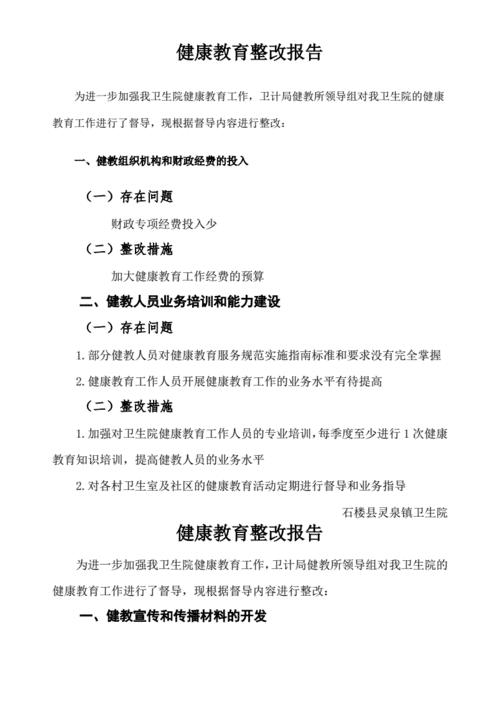10天健康监测期是多久
Title: Maximizing Benefits: A Comprehensive Guide to a 10Day Health Monitoring Period
In today's fastpaced world, where the demands of work, family, and social life can often take precedence, it's easy to overlook the importance of our health. However, taking the time to monitor and prioritize our wellbeing is crucial for maintaining a balanced and fulfilling life. A 10day health monitoring period offers a valuable opportunity to assess various aspects of your health and make informed decisions to improve it. In this guide, we'll delve into the significance of a 10day health monitoring period across different dimensions of wellness and provide actionable strategies to maximize its benefits.
Understanding the Purpose
Before embarking on a 10day health monitoring period, it's essential to understand its purpose. This period serves as a dedicated timeframe during which individuals can systematically evaluate their physical, mental, and emotional wellbeing. By tracking key health indicators and behaviors over this duration, individuals gain insights into their current health status, identify areas for improvement, and establish sustainable habits for longterm wellness.

Key Components of Health Monitoring
1. Physical Health:
During the 10day period, prioritize monitoring various aspects of physical health, including:
Nutrition
: Keep a detailed record of your dietary intake, paying attention to portion sizes, food quality, and meal timings. Aim for a balanced diet rich in fruits, vegetables, lean proteins, and whole grains.
Exercise
: Track your physical activity levels, including duration, intensity, and type of exercise. Strive for at least 150 minutes of moderate aerobic activity or 75 minutes of vigorous activity per week, supplemented with strength training exercises.
Sleep
: Monitor your sleep patterns, aiming for 79 hours of restorative sleep each night. Maintain a consistent sleep schedule, create a relaxing bedtime routine, and optimize your sleep environment for quality rest.2. Mental and Emotional Wellbeing:
In addition to physical health, prioritize the following aspects of mental and emotional wellbeing:
Stress Management
: Assess your stress levels and identify triggers that contribute to stress. Incorporate stressreduction techniques such as deep breathing exercises, meditation, mindfulness, and engaging in hobbies or activities that bring joy.
Emotional Awareness
: Pay attention to your emotions and thoughts throughout the monitoring period. Practice selfreflection and journaling to gain insights into your emotional patterns and develop strategies for enhancing emotional resilience.
Social Connections
: Evaluate the quality of your social interactions and relationships. Prioritize spending time with supportive friends and family members, and engage in activities that foster a sense of belonging and connection.3. Health Metrics and Biomarkers:
Utilize quantitative measures to track key health metrics and biomarkers, such as:
Blood Pressure
: Monitor your blood pressure regularly using a reliable blood pressure monitor. Aim for readings within the normal range (<120/80 mmHg) to reduce the risk of cardiovascular complications.
Blood Sugar Levels
: Keep track of your blood sugar levels, especially if you have diabetes or are at risk of developing it. Aim for stable blood sugar levels through a combination of healthy eating, regular exercise, and medication adherence if prescribed.
Weight and Body Composition
: Monitor changes in your weight and body composition using scales or body composition analyzers. Aim for a healthy weight range based on your age, height, and body type, and focus on sustainable lifestyle habits rather than shortterm fad diets.Actionable Strategies for Improvement
Based on the insights gained from the 10day health monitoring period, implement the following strategies to improve your overall wellbeing:
Set Realistic Goals
: Establish specific, measurable, attainable, relevant, and timebound (SMART) goals for improving various aspects of your health.
Prioritize SelfCare
: Dedicate time each day for selfcare activities that promote relaxation, rejuvenation, and stress relief.
Seek Professional Guidance
: Consult healthcare professionals, such as physicians, nutritionists, personal trainers, or mental health therapists, for personalized guidance and support.
Build Healthy Habits
: Focus on cultivating sustainable habits that align with your health goals, such as regular exercise, mindful eating, adequate sleep, and stress management techniques.
Stay Consistent
: Consistency is key to longterm success. Stay committed to your health goals and track your progress regularly to stay motivated and accountable.Conclusion
A 10day health monitoring period serves as a valuable opportunity to assess and enhance various aspects of your health and wellbeing. By prioritizing physical, mental, and emotional wellness and implementing actionable strategies for improvement, you can optimize your health and vitality for a fulfilling life. Remember, your health is your greatest asset, so invest in it wisely.
This guide provides a comprehensive overview of the significance of a 10day health monitoring period and actionable strategies to maximize its benefits across different dimensions of wellness. From tracking physical health indicators to enhancing mental and emotional wellbeing, prioritizing selfcare, and seeking professional guidance, individuals can leverage this period to make informed decisions and cultivate habits that promote longterm health and vitality.











